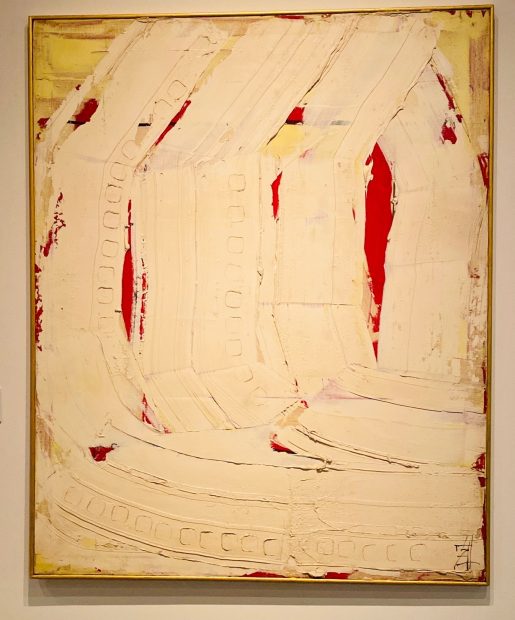須田剋太〜抽象時代〜 Kokuta SUDA~Abstract era~

ひと昔前の関西の美術館のオープニングパーティの名物は、つなぎ姿の須田剋太とメキシコ風バンダナの下村良之助でした。須田さんはまるで自然児がそのまま大人になったような人柄で独特の話し方から活気が溢れていた様子が今も目に浮かんできます。
もう 30 年になるのです、宇宙に還られて!しかし御本体は宇宙に帰還されても地球上には須田さんの無数の分身(作品)が生命を輝かせて、見る者にエネルギーを噴射しています。そして新たな生命現象を触発させています。画家にとりましては本体の消滅は意味がないのでは?とさえ思われます。
関東に生を成した、ひときわ感受性の鋭い自然児は画家を目指し幾多の試練を経て、関西に根を下ろすことになりました。現代抽象画の先駆者である長谷川三郎との運命的な出会いは須田の画業の大きな転換期となりました。吉原治良の率いる芦屋市美術展やゲンビ、具体美術等の熱き渦潮の当時の関西の地にあり、須田の造形本能はマックス状態であったことが、この時代の抽象作品から如実に伝わってきます。ですから私は '50~'60 年代の作品に拘るのです。そして愛するのです。実際、半世紀余を経た今目にしても少しも色褪せてない、いや今日の閉鎖的な人間社会にあっては一層輝いてくるのです。
只今展覧会開催中 パラミタミュージアム http://www.paramitamuseum.com,~11/29
A long time ago, the specialties of the opening party of the museum in Kansai were Suda Kokuta in a coverall and Ryonosuke Shimomura in a Mexican bandana. I can still see Mr. Suda's personality as if a natural child had grown up, and his unique way of speaking was full of energy.
It's been 30 years now, return to space! However, even if the main body returns to space, Mr. Suda's innumerable alter ego (works) shines life on the earth and injects energy to the viewer. And it is inspiring new life phenomena. Isn't the disappearance of the main body meaningless to the painter? I think so.
An extremely sensitive natural child who was born in the Kanto region, after many trials aiming to become a painter, decided to take root in the Kanto region. The fateful encounter with Saburo Hasegawa, a pioneer of contemporary abstract painting, marked a major turning point in Suda's painting industry. It is clearly understood from the abstract works of this era that Suda's modeling instinct was in the max state in the Kansai area at the time of the hot whirlpools such as the Ashiya City Art Exhibition led by Jiro Yoshihara, Genbi, and Gutai Art. .. That's why I stick to the works of the '50s and' 60s. And I love you. In fact, more than half a century later, it hasn't faded at all, and it shines even more in today's closed human society.
